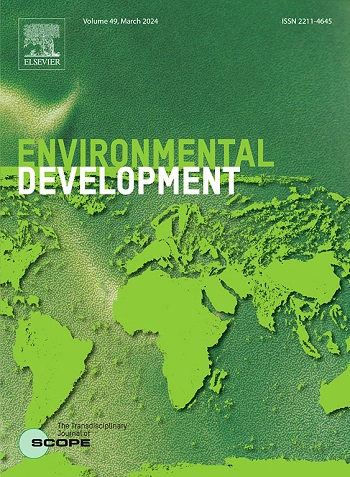Co-governance for green infrastructure preservation: Collaborative strategies in customary land tenure cities of Sub-Saharan Africa
IF 5.3
2区 环境科学与生态学
Q2 ENVIRONMENTAL SCIENCES
引用次数: 0
Abstract
Sub-Saharan Africa (SSA) cities often struggle with the degradation of natural Green Infrastructure (GI), especially in cities where customary land tenure is more prevalent. Contrary to the prevailing narrative that traditional authorities are primarily responsible for this decline, this paper applies the collaborative governance theory to demonstrate the prospects of preserving GI in SSA cities through state-traditional institutional co-governance initiatives. Data for the paper was obtained from the Environmental Protection Agency, the Manhyia Palace and key paramouncies, and Metropolitan, Municipal and District Assemblies in Kumasi in Ghana. Corresponding spatial data was gathered from satellite images on eight GI in Kumasi. Analysis of the spatial data revealed that prior to the co-governance arrangements, the selected GI were depleting at an annual rate of 4.7 % between 2003 and 2013, and 5.4 % between 2013 and 2019 mainly due to encroachment by grey land uses. Five years after the initiative (2019–2023), the annual rate of decline reduced to 0.9 %, with a total of 20.36 km2 of GI preserved. Drawing from this analysis, we assert that co-governing GI by both state and traditional institutions, as emphasized by the collaborative governance theory, is a viable strategy for preserving GI in cities that are characterised by organic and informal development patterns, often spurred by customary land tenure arrangements.
绿色基础设施保护的共同治理:撒哈拉以南非洲习惯土地权属城市的合作战略
撒哈拉以南非洲(SSA)的城市往往面临着自然绿色基础设施(GI)退化的问题,特别是在传统土地权属较为普遍的城市。与传统权威机构对这一下降负主要责任的普遍说法相反,本文应用协作治理理论来展示通过国家-传统机构共同治理倡议在SSA城市保护地理标志的前景。本文的数据来自加纳库马西的环境保护局、曼海亚宫和主要的政府机构,以及大都会、市政和地区议会。对库马西8个GI的卫星影像进行了相应的空间数据采集。对空间数据的分析表明,在共同治理安排之前,2003 - 2013年所选地理标志的年消耗率为4.7%,2013 - 2019年的年消耗率为5.4%,主要是由于灰色土地利用的侵蚀。实施五年后(2019-2023年),年递减率降至0.9%,保护了20.36平方公里地理标志。根据这一分析,我们断言,正如协同治理理论所强调的那样,由国家和传统机构共同治理地理标志,是在以有机和非正式发展模式为特征的城市中保护地理标志的可行策略,这些发展模式往往是由习惯的土地权属安排所推动的。
本文章由计算机程序翻译,如有差异,请以英文原文为准。
求助全文
约1分钟内获得全文
求助全文
来源期刊

Environmental Development
Social Sciences-Geography, Planning and Development
CiteScore
8.40
自引率
1.90%
发文量
62
审稿时长
74 days
期刊介绍:
Environmental Development provides a future oriented, pro-active, authoritative source of information and learning for researchers, postgraduate students, policymakers, and managers, and bridges the gap between fundamental research and the application in management and policy practices. It stimulates the exchange and coupling of traditional scientific knowledge on the environment, with the experiential knowledge among decision makers and other stakeholders and also connects natural sciences and social and behavioral sciences. Environmental Development includes and promotes scientific work from the non-western world, and also strengthens the collaboration between the developed and developing world. Further it links environmental research to broader issues of economic and social-cultural developments, and is intended to shorten the delays between research and publication, while ensuring thorough peer review. Environmental Development also creates a forum for transnational communication, discussion and global action.
Environmental Development is open to a broad range of disciplines and authors. The journal welcomes, in particular, contributions from a younger generation of researchers, and papers expanding the frontiers of environmental sciences, pointing at new directions and innovative answers.
All submissions to Environmental Development are reviewed using the general criteria of quality, originality, precision, importance of topic and insights, clarity of exposition, which are in keeping with the journal''s aims and scope.
 求助内容:
求助内容: 应助结果提醒方式:
应助结果提醒方式:


